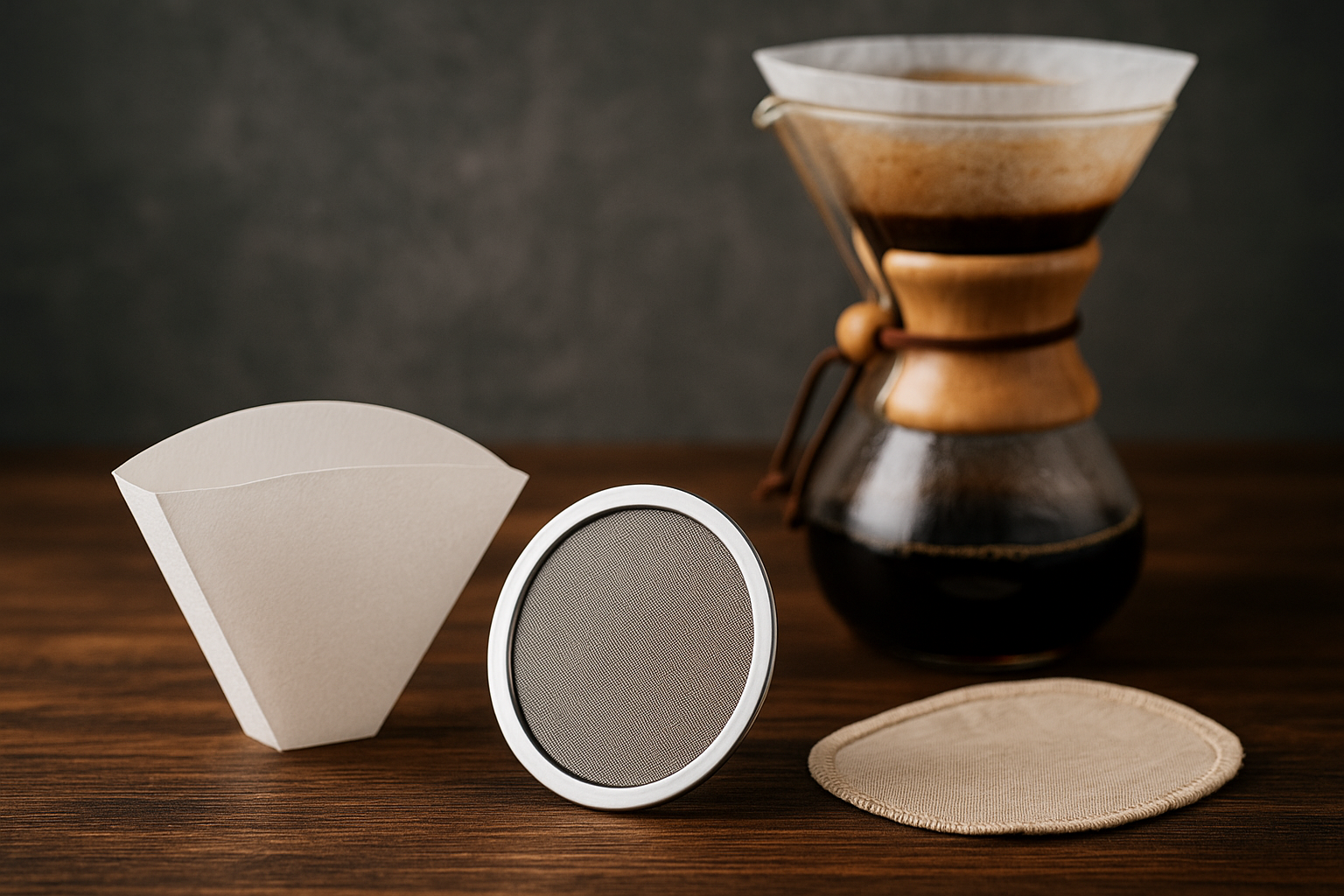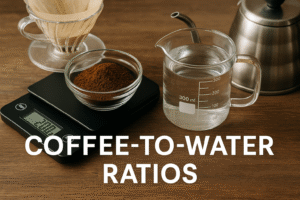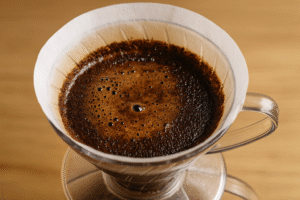Most people don’t think twice about the coffee filter they use. It’s just a piece of paper—or metal or cloth—that holds the grounds, right?
But in reality, the type of filter you choose plays a crucial role in shaping your coffee’s flavor, body, texture, and even its aroma. Whether you prefer a clean, crisp cup or a rich, heavy-bodied brew, your filter can help you get there—or hold you back.
In this guide, we’ll break down the main types of coffee filters, how each one affects the brew, and which one is right for your favorite method and taste preferences.
Why Filters Matter in Coffee Brewing
Filters don’t just stop grounds from entering your cup. They also:
- Regulate flow rate
- Absorb or pass oils
- Catch fine coffee particles
- Impact clarity and mouthfeel
Changing your filter can drastically alter the final cup—even if all other variables remain the same.
Main Types of Coffee Filters
Let’s explore the three primary categories of coffee filters:
1. Paper Filters
Material: Typically bleached or unbleached cellulose
Used in: Pour-over (Hario V60, Kalita Wave, Chemex), drip coffee makers
Pros:
- Produces a clean, bright, crisp cup
- Removes oils and fine sediments
- Emphasizes acidity and floral/fruity notes
Cons:
- Can impart a “paper” taste if not rinsed
- Some styles are single-use and not eco-friendly
- Slower flow rate compared to metal filters
Best for: People who enjoy clarity and lighter body in their coffee
2. Metal Filters
Material: Stainless steel mesh
Used in: Reusable pour-over cones, AeroPress, French press
Pros:
- Allows oils and micro-particles to pass through
- Produces richer, fuller-bodied coffee
- Reusable and eco-friendly
Cons:
- More sediment in the cup
- Requires thorough cleaning
- Shorter shelf life if poorly maintained
Best for: Fans of bolder, textured brews who want a sustainable option
3. Cloth Filters
Material: Cotton, hemp, or other woven fabric
Used in: Japanese pour-over (Nel Drip), siphon brewers, some Chemex systems
Pros:
- Retains oils better than paper
- Filters out fine particles better than metal
- Produces a soft, balanced cup
Cons:
- Requires frequent cleaning and drying
- Can develop odor or bacteria if not cared for
- Less consistent flow rate over time
Best for: Brewing enthusiasts looking for a traditional or artisanal experience
How Filter Type Changes the Flavor
Let’s break down how each filter changes what ends up in your cup:
| Filter Type | Flavor Profile | Body | Clarity | Oils |
|---|---|---|---|---|
| Paper | Bright, clean | Light | High | Minimal |
| Metal | Bold, earthy | Full | Low | High |
| Cloth | Balanced | Medium | Medium | Medium |
How to Choose the Right Filter for Your Method
Pour-Over (V60, Kalita, Chemex)
- Best: Paper for clarity; metal for richness
- Note: Always rinse paper filters before use to avoid paper taste
AeroPress
- Best: Paper for smooth espresso-style cups
- Optional: Metal disk filters for oil retention and body
French Press
- Built-in metal filter
- Optional: Add paper or cloth layer for reduced sediment
Cold Brew
- Works with mesh filters or cloth
- Coarse grind helps reduce fines even without a paper barrier
Drip Coffee Maker
- Basket or cone-shaped paper filters are most common
- Metal mesh baskets available for reusable option
Tips for Using Filters Effectively
- Always rinse paper filters with hot water before brewing to remove any cardboard-like taste and preheat the brewer
- Don’t overfill metal filters, as they tend to overflow with fine grinds
- Rotate cloth filters often and wash thoroughly after each use
- Store cloth filters in clean water in the fridge to prevent odor or mold
- Replace filters as needed—metal filters eventually clog or fray, and paper filters can tear or collapse if too thin
Frequently Asked Questions (FAQs)
1. Do paper filters remove caffeine?
No. They trap oils and particles, not caffeine.
2. Can I reuse paper filters?
It’s not recommended. They break down easily and can alter flavor on second use.
3. Are metal filters better for the environment?
Yes, if properly maintained. They eliminate waste and last for years.
4. Why does my coffee taste bitter with a metal filter?
You might be over-extracting, or your grind is too fine. Metal filters allow more solids into the cup.
5. How do I clean a cloth filter?
Rinse immediately after use, boil it weekly, and store it damp in a sealed container in the fridge.
6. Which filter is healthiest?
Paper filters trap cafestol, an oil linked to cholesterol. If that’s a concern, paper is best.
7. Is there a taste difference between bleached and unbleached paper?
Slightly. Unbleached can taste earthier unless rinsed well. Bleached is more neutral.
Final Thoughts – Your Filter, Your Flavor
Your filter is more than a brewing accessory—it’s a flavor gatekeeper. Whether you want a crisp, clean cup or a full-bodied brew with all the oils, the right filter helps you get there.
Experiment with different types and take notes. Taste the difference. Find what matches your coffee style—and enjoy how such a small detail can completely transform your morning ritual.
Sometimes, the best change you can make in your coffee routine isn’t a new grinder or a different bean. It’s just switching the filter.

Marcio Luzardo is a coffee enthusiast and the voice behind Tudo Viraliza. With a passion for turning curiosity into practical knowledge, he shares easy-to-follow tips, guides, and insights to help readers enjoy better coffee every day. When he’s not writing, Marcio is exploring new brewing methods or diving into the rich stories that connect coffee to culture, lifestyle, and wellness.



